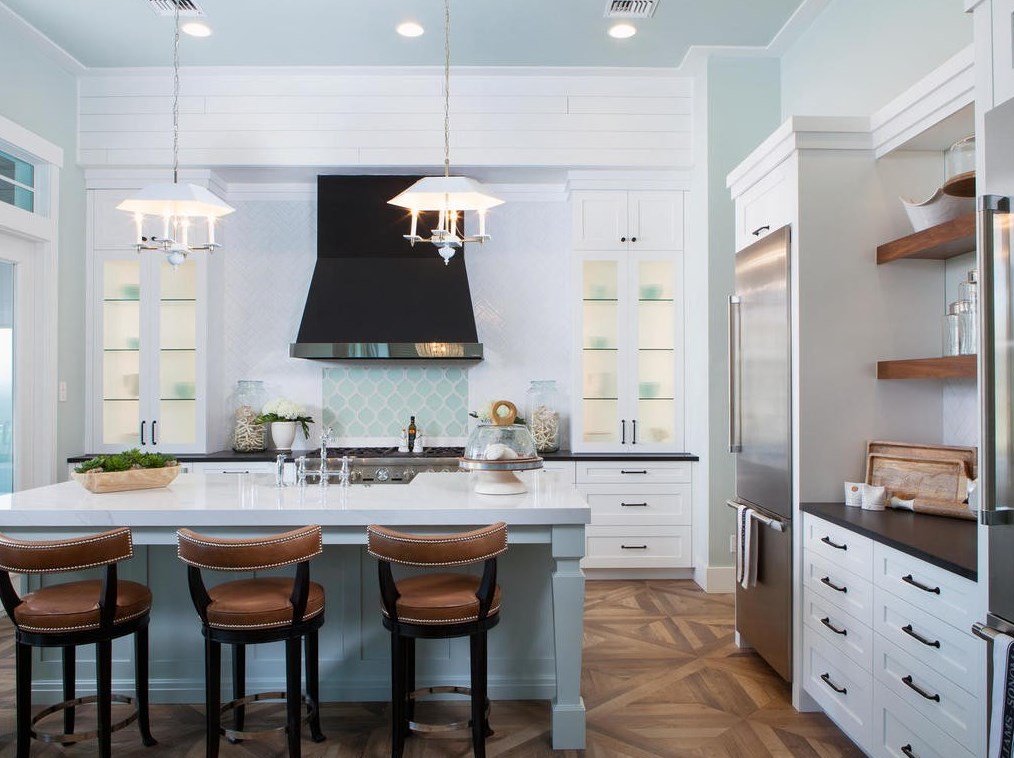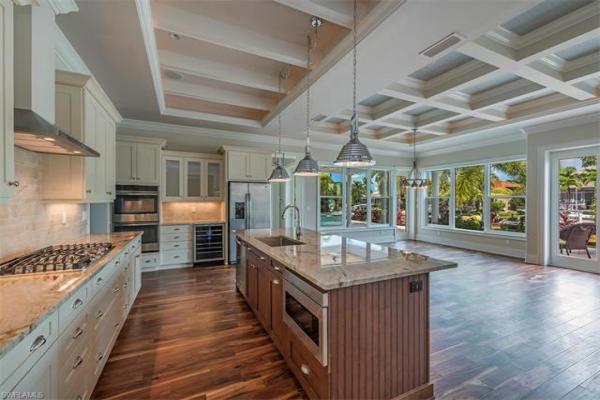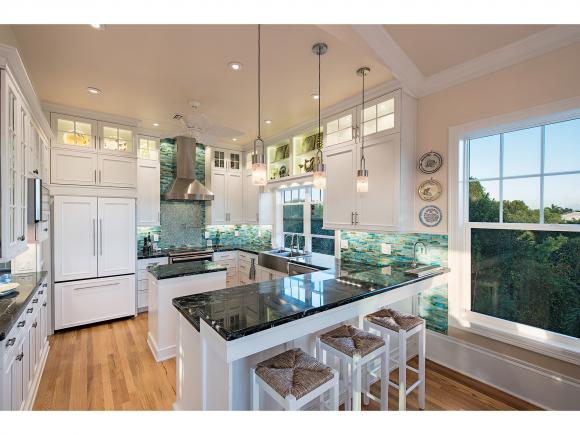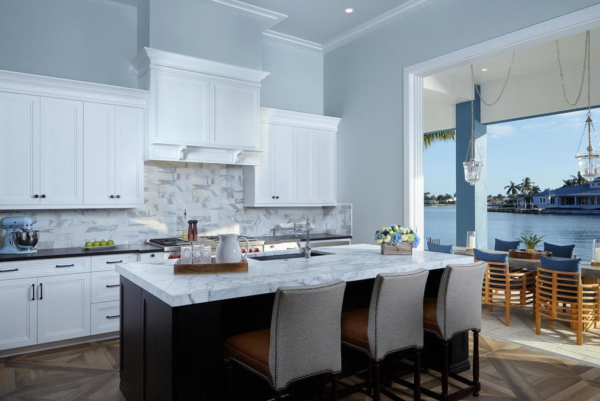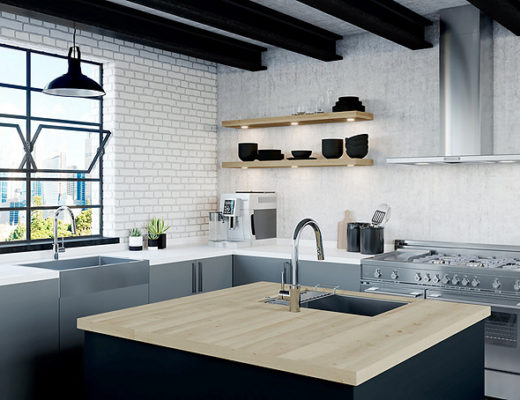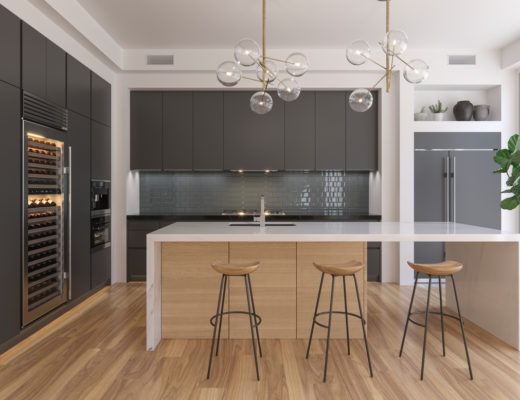Native Indian Influence
Elements: Limestone, Shell and Sand
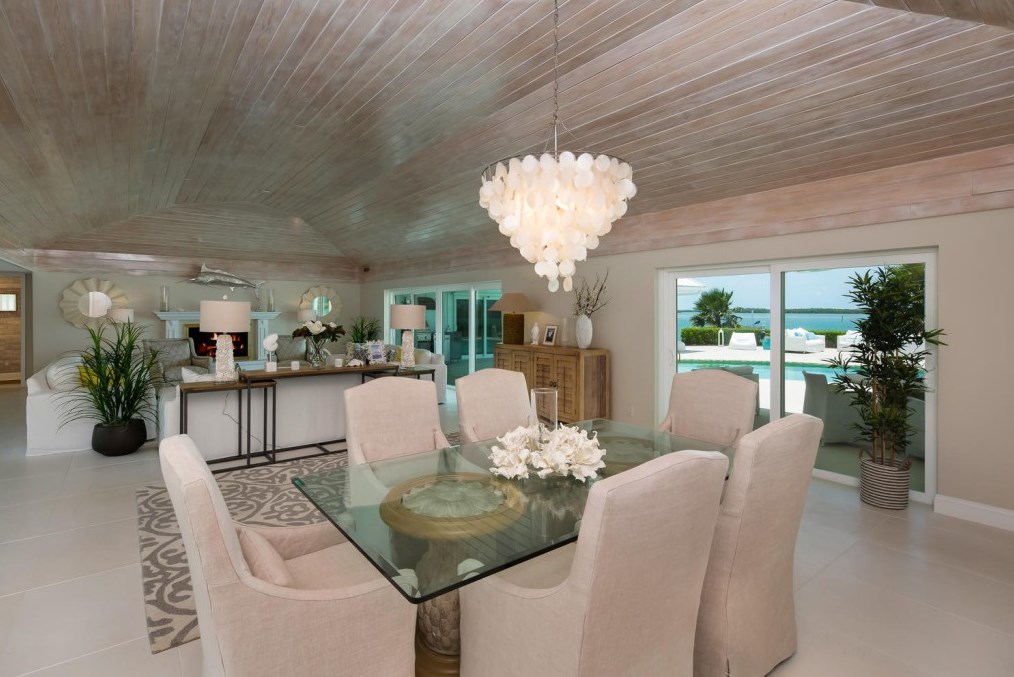
“Land’s End”, Marco Island, FL | Listed by Coldwell Banker Homes
The Calusa Indians inhabited the coast around 500 A.D. and were the original architects of the area. They skillfully used millions upon millions of shells to create dwellings, temples, and burial sites strong enough to protect from hurricanes! The popular use of limestone, pale sand tones, bright bleached white, and statement shell decor is a readily recognizable style to tourists, but few know that islanders are honoring millennia old traditions with these interiors.
Industry and Re-Population
Elements: Hardwoods, Architectural Embellishments
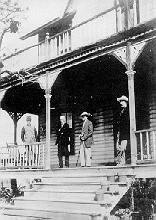
Marco pioneer Capt. William Collier, left, surveys the view from his porch.
By the mid-1700s Spanish explorers brought disease to the islands essentially wiping out the Calusa population and the area sat largely uninhabited until after the Civil War. The arrival of William Thomas Collier and his family began to bring Marco Island back to life in the late 1890’s establishing a hotel, The Olde Marco Inn, to support the budding clamming industry (which would help revive the entire region).
The Collier Family homes, as well as in the Inn, were designed with late-Victorian influences crafted from local materials. Cypress, palm, and pine trees were abundant and perfectly suited for task of building homes with interiors and exteriors that could hold up to Florida climate (the Calusas has figured that out, too.)
Many of the newest homes in the area still incorporate local woods into the design in flooring, cabinetry, and moldings. Exposed beams, carved accents, and a hints of Victorian charm just “feel right” in this environment–locals credit Captain Collier for establishing high style on the then-uninhabited island of shells.
Development and Preservation
Elements: Sunlight, Landscape, and Water
Though the Collier’s helped bring modern living to the island the depression hit the tiny area hard and once again the island digressed into an undeveloped, isolated paradise in ruin. In the early 1960’s the Collier’s last holdings were sold to Deltona Development Corporation (The Mackle Family business) who through a special permissions developed 125 miles of paved roads and 90 miles of navigable bulkheaded waterways carving Marco’s now-signature profile.

Marco Island before and after the development project.
The island’s modernization turned a barely-inhabitable, mosquito-infested landmass into a residential dream for thousands. Respect for nature and the 10,000 island surrounding Marco are core missions of the locals and most cherish the opportunity to preserve and enhance the surrounding environment. Appreciating the natural landscape, warm Gulf waters, and year-round sunshine are prioritized in island building. Even the inland homes on the smallest canals are built to maximize the lot’s water access and capture light at every opportunity, especially in the kitchen. The Mackle’s can be credited for making backyard dolphin watching and views of tranquil mangrove forests part of island home design.
Modern Tourism
Elements: Color, Color and more Color
Consistently ranked in TripAdvisor’s Top Ten Island in the World (#1 on 2014) the island is no longer writing it’s own story as social media and tourists now define what makes it special. Ecotours of the former pineapple plantations, Gulf fishing, birding, and some of the most colorful sunsets on Earth leave a lasting impression on visitors.

Residents often fuel their guests’ excitement by incorporating the colors of the island in their homes. From the pale blues of the skies to the bright yellow and greens of the fish and fauna you’d be hard-pressed to find an island home without a serious pop of color. When it comes to color, nothing is off limits on the island–if you an find it in nature then go for it!
